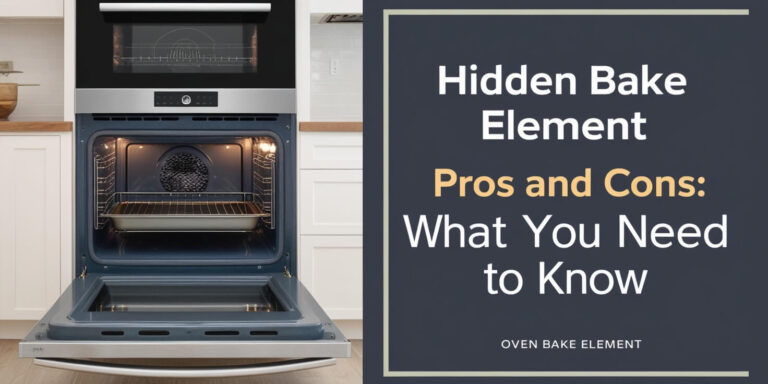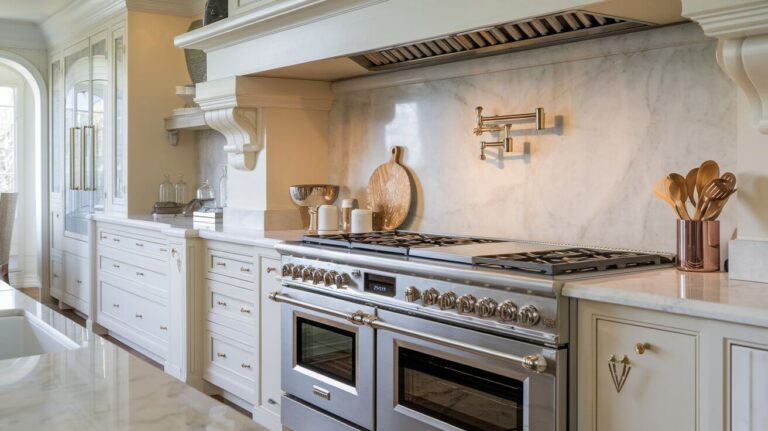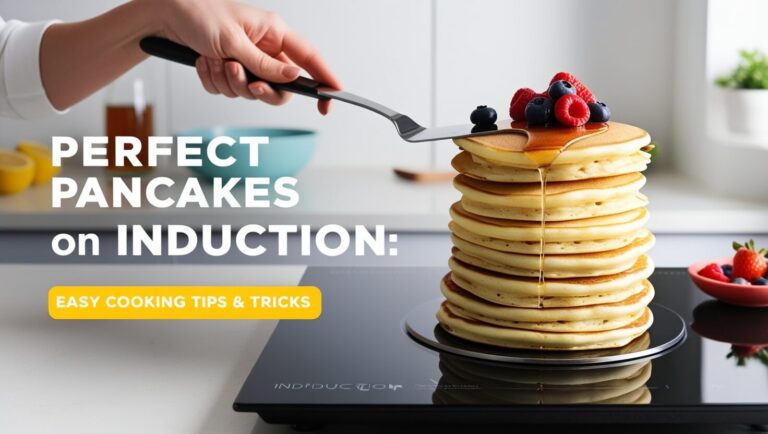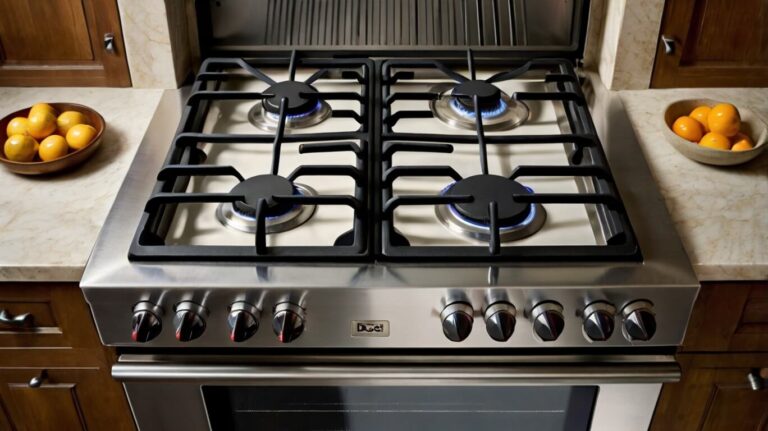
The ideal simmer temperature on a 1-10 stove dial typically falls between settings 2 and 3, reaching 185°F to 205°F. This gentle heat creates tiny bubbles that slowly rise to the surface, perfect for cooking delicate foods and developing rich flavors.
Getting your stovetop’s simmer just right can puzzle even seasoned home cooks. Each stove heats differently, and recipes often skip mentioning exact dial numbers. This guide covers exact simmer temperatures, visual signs of a proper simmer, and tips for different stove types.
Simmer Temperature Ranges for Different Stoves
Electric Stove Simmer Settings (1-10 Scale)
On most electric stoves, the sweet spot for simmering sits between 2 and 3 on the dial. Electric burners take time to heat up and cool down. Start at 2 and adjust up if needed. Some tips:
- Setting 1: Too low for most simmering
- Setting 2-3: Perfect simmer range
- Setting 4+: Too hot, moves into boiling territory
Gas Stove Simmer Numbers
Gas stoves offer quick heat control. For a steady simmer:
- Set the dial to low or 2
- Look for small bubbles rising slowly
- Listen for a gentle hiss from the burner
A gas flame spreads heat evenly. This helps keep a constant simmer temp of 185°F to 205°F.
Induction Cooktop Simmer Levels
Induction cooktops need different settings:
- Level 1-2: Good for delicate simmering
- Level 3: Standard simmer setting
- Level 4-5: Rapid simmer, nearly boiling
Induction heats fast. Start low – you can always turn it up.
How to Find the Perfect Simmer on Your Stove
Visual Clues for Correct Simmer Temperature
Watch your pot for these signs:
- Tiny bubbles rise occasionally
- Surface moves gently
- Steam rises steadily
- Liquid doesn’t appear still or violently active
Using a Thermometer to Verify Simmer Heat
A kitchen thermometer takes guesswork out:
- Dip it in liquid (not touching pot bottom)
- Wait for reading to steady
- Look for 185°F-205°F range
Cheap thermometers work fine for this task.
Adjusting Heat for Ideal Simmer
Fine-tune your simmer:
- Too hot? Drop 1 number on dial
- Too cool? Raise 1/2 number
- Give 5 minutes between adjustments
Common Simmer Temperature Mistakes
Too Hot vs Too Cool
Signs your simmer’s too hot:
- Large bubbles breaking surface
- Liquid reducing quickly
- Food sticking to pot bottom
Signs it’s too cool:
- No visible movement
- Food takes forever to cook
- Flavors don’t develop
Quick Fixes for Simmer Issues
Solve common problems fast:
- Boiling not simmering? Remove pot briefly
- Can’t maintain temp? Try a heat diffuser
- Uneven heat? Switch to heavier pot
Simmering Different Foods
Meat and Protein Simmer Times
Different proteins need different simmer times:
- Chicken: 25-30 minutes
- Beef stew meat: 2-3 hours
- Fish: 8-10 minutes
Keep temp steady for tender results.
Vegetable Simmering Guide
Veggie simmer times vary:
- Potatoes: 15-20 minutes
- Broccoli: 4-8 minutes
- Carrots: 10-12 minutes
Test with fork for doneness.
Sauce and Soup Simmer Temperatures
Sauces thicken at simmer temps:
- Tomato sauce: 45-90 minutes
- White sauce: 20 minutes
- Stock: 2-4 hours
Stir occasionally to prevent sticking.
Simmer vs Other Cooking Temperatures
Difference Between Simmer and Boil
Key differences: Simmer (185°F-205°F):
- Small bubbles
- Gentle motion
- Good for tough meats
Boil (212°F):
- Large bubbles
- Vigorous motion
- Best for pasta, blanching
Low Heat vs Simmer Settings
Low heat differs from simmer:
- Low: 250°F-300°F
- Often setting 1 on stove
- Used for keeping food warm
Pro Tips for Maintaining Simmer Temperature
Lid On or Off for Simmering
Lid choice affects simmer:
- On: Holds heat, speeds cooking
- Off: Allows evaporation, thickens sauces
- Partial: Balances heat and evaporation
Best Pots for Even Simmer Heat
Pot choice matters:
- Heavy-bottomed: Best heat distribution
- Cast iron: Holds steady temp
- Thin pots: Create hot spots
Troubleshooting Simmer Temperature Problems
Fix common issues:
- Food scorching? Stir more often
- Temp won’t steady? Try different burner
- Heat too intense? Use larger pot
Extra tips for perfect simmering:
- Stir clockwise – prevents sticking
- Check liquid levels every 30 minutes
- Use wooden spoons to avoid scratching pots
- Keep spare hot liquid ready to add
Remember these points about simmering temps:
- Patient cooking yields best results
- Practice helps you know your stove
- Visual cues beat exact dial numbers
- Different foods need different simmers
Simmering might seem tricky at first. But once you know your stove’s sweet spot between 185°F and 205°F, usually around dial setting 2-3, you’ll simmer with confidence. Watch those gentle bubbles, use your thermometer when needed, and enjoy the rich flavors that come from perfectly simmered dishes.






